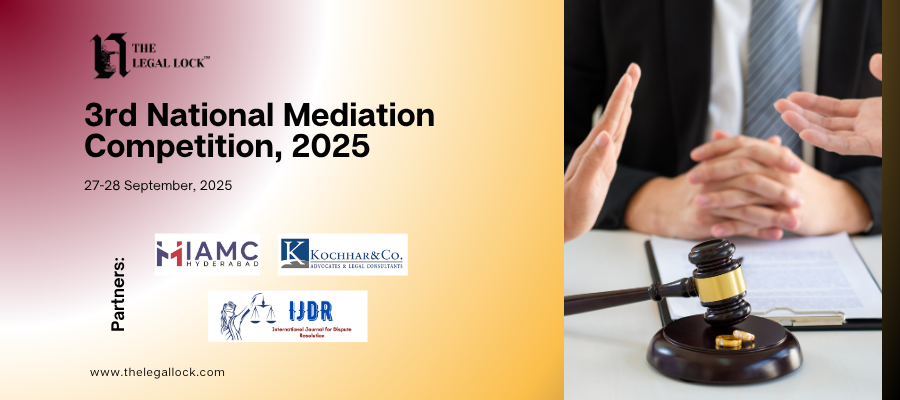The “Bajaj Auto – TVS Motors” patent controversy

By-Ananya Bose

INTRODUCTION
A patent is the elite right of the innovation given to the holder delivering him to partake in the imposing business model alongside the benefits corresponding to the utilization of that development. The patent demonstration 1970 has arrangements identifying with the implementation of patent privileges and ensures the interest of the holder
Bajaj Auto Ltd. Versus T.V.S. Engine Company Ltd is a milestone instance of a debate concerning the unapproved utilization of the patent of the Digital Twin Spark Ignition (DTSi). It is a licensed innovation of Bajaj auto restricted, in DTSi innovation, the two flash attachments at one or the flip side of the burning chamber help quicker and better ignition.
This beginnings back in 2002 when Bajaj recorded an application for the patent of DTS-I innovation on July 16 in the Indian Patent Office. Bajaj likewise documented a PCT application (The Patent Cooperation Treaty-it is a worldwide patent deal that gives bound together with a method to recording patent applications in contracting States) on October 30, 2003. On July 7 2005 the patent was conceded to Bajaj Auto Ltd.
Terms and segments Often utilized for this situation study clarified underneath:
The tenet of reciprocals (additionally named as regulation of essence and marrow)is lawful teaching wherein a court is enabled to expect involved with a suit to take responsibility for encroachment of a patent either straightforwardly or in a roundabout way.
This implies that regardless of whether a party encroach on a patent right/guarantee straightforwardly or in a real sense however all things considered is identical to the asserted innovation, the tenet of reciprocals will become possibly the most important factor.
Segment 106 of the Patents Act 1970 furnishes with the Power of court to give help in instances of dangers of encroachment procedures on outlandish grounds to the respondent. This segment proposes that simple information on the presence of a patent won’t add up to comprise a danger to additional procedures against any party.
Section 108 of the Patents Act 1970 accommodates reliefs in the suit for encroachment. This segment is regularly utilized for looking for permanent reliefs for the offended party.
Case Analysis
FACTS
There are two suits for this situation. The first was when, Bajaj claims unapproved use of his patent in regards to DTSi against TVS at Chennai High Court in 2007 for the alleviation of long-lasting order under area 108 of the Patents Act 1970, limiting from utilizing the innovation depicted in this patent for assembling, promoting, selling, making available for purchase or sending out 2/3 wheelers, including the proposed 125-CC FLAME cruiser containing an inward burning motor. Offended parties likewise asserted harms for encroachment of patent.
While the suit was forthcoming in the high court, the offended party documented an application for looking for the brief directive for the equivalent till the pendency of the suit.
TVS Motor Company brought a resulting suit under segment 106 of the Patent Act in a similar High Court, asserting that Bajaj is making “baseless dangers of patent encroachment”.
To this, the Madras High Court in opposite issues a transitory directive controlling TVS partially meaning along these lines it could execute forthcoming (currently taken) orders yet couldn’t take new requests.
Later to this request, TVS argued for abandoning this directive request and the division seat of the High Court concurs and clears the request later.
To this, an allure was recorded under the watchful eye of the Hon’ble Supreme Court by the solicitors against the request for the division seat of Madras High Court.
Issues
Regardless of whether the Defendants encroached the patent or blend even though it made a few upgrades to the vitally protected article?
ORDER
High Court communicated its misery on the pendency of the case before the single-seat of Madras HC at the interlocutory stage for so long as the suit was recorded in December 2007 but then, even composed articulation has not been documented.
SC said that as they have effectively seen on account of M/s. Shree Vardhman Rice and Gen Mills versus M/s Amar Singh Chawalwala that the issues comparable to the patent brand name and copyright should be quickly settled by the preliminary court rather than questioning about to start grinding and rejecting orders to one another. Such suits continue for a long time and are not settled as expected which is certainly not a decent practice.
SC guided all courts and councils to follow this case judgment stringently, dependably and loyally.
Consequently, without investigating the benefits of the current case, SC guided the respondent to record a composed assertion at the earliest opportunity if not currently documented so. SC additionally coordinated the Madras HC to hear the case on an everyday premise.
No deferment request will be allowed and the suit will be discarded at the latest 30th November 2009.
SC court additionally guided the Madras high court to choose a beneficiary in such a manner who will keep every one of the records of the deal continues of the TVS till the forthcoming of the suit.
The SC then, at that point, excused the allure.
Final judgment
The Madras High Court held that the patent rights vest with the Bajaj Auto ltd as it has been fabricating items utilizing the patent innovation for the last 5years.
The Court in this way in passage 54 saw that-
“It is additionally clear according to the choices, to choose the clever elements to establish “essence and marrow” a purposive development must be provided to make it a fundamental prerequisite of the creation that any variation would follow outside the syndication regardless of whether it couldn’t have a material impact upon the working of innovation.”
ANALYSIS
The court gave the proportion decided that if the various mixes and interaction are done any other way than the protected strategy and, after its all said and done it’s anything but an encroachment and can be held as a creative advance. On the off chance that various mixes are utilized for a similar outcome, no encroachment.
The legitimate way to deal with the translation of licenses enrolled under the Patents Act 1949 was clarified by Lord Diplock in Catnic Components Ltd. v. Slope and Smith Ltd. The language ought to be given a purposive and not a strict development.
If the issue was whether a component encapsulated in a supposed encroachment which fell external the essential, strict or a context-oriented significance of an unmistakable word or expression in the case (a variation) was in any case inside its language as appropriately deciphered, the court ought to ask itself the accompanying three inquiries:
Does the variation have a material impact on how the development works? If yes; the variation is outside the case. Assuming no.
Would this (for example that the variation had no material impact) have been clear at the date of distribution of the patent to a peruser gifted in the workmanship? Assuming no, the variation is outside the case. On the off chance that yes.
Would the peruser gifted in the workmanship, in any case, have perceived from the language of the case that the patentee expected that severe consistency with the essential significance was a fundamental necessity of the creation. On the off chance that indeed, the variation is outside the case.
The court in section 69 arose following standards:
The legitimacy of a patent can be tested in a suit on different grounds of denial as set out under Sections 64 and 107 of the Patents Act.
For the award of break order in a patent matter, the at first sight legitimacy of the patent ought to be shown and by all appearances encroachment ought to be demonstrated separated from the accessibility of equilibrium of accommodation and hopeless misfortune.
If the patent is another one, the simple test at the Bar would be very adequate for the refusal of a break order when contrasted with a genuinely old patent.
Indeed, even in IPR cases, aside from at first sight case, the equilibrium between comfort and hopeless injury, the simple enrollment of the patent alone would not be adequate and the Court should take a gander at the entire case for example the strength of the instance of the offended party and the strength of the respondent.
Independent of the assessment and examination made under Sections 12 and 13 of the Patents Act, no assumption can be attracted concerning the legitimacy of the patent and regardless of whether the application for repudiation of the patent is forthcoming and when genuine contention exists as respects the presence of an innovation dependent on earlier craftsmanship, the Court ought to be delayed in allowing the directive.
Conclusion
For this situation, the fight in court was battled for right around 2 years and was battling between the interlocutory orders, which were making the fight in the court of no constructive outcomes for one or the other party.
The Supreme Court gave a milestone judgment for this situation guaranteeing that all cases corresponding to IPR must be finished within 4 months from the date of documenting the suit and the case ought to be heard on an everyday premise to follow the SC’s bearing.
REFERENCES
• Legalserviceindia.com. n.d. Analysis on TVS Motor Company Limited v/s Bajaj Auto Limited (2009) Supreme Court.
• Our Legal World. n.d. Bajaj Auto Ltd. Vs T.V.S. Motor Company Ltd JT 2009 (12) SC 103.
• India, l., n.d. Bajaj Auto Ltd. Vs. T.V.S. Motor Company Ltd. [online] Legalservicesindia.com.








